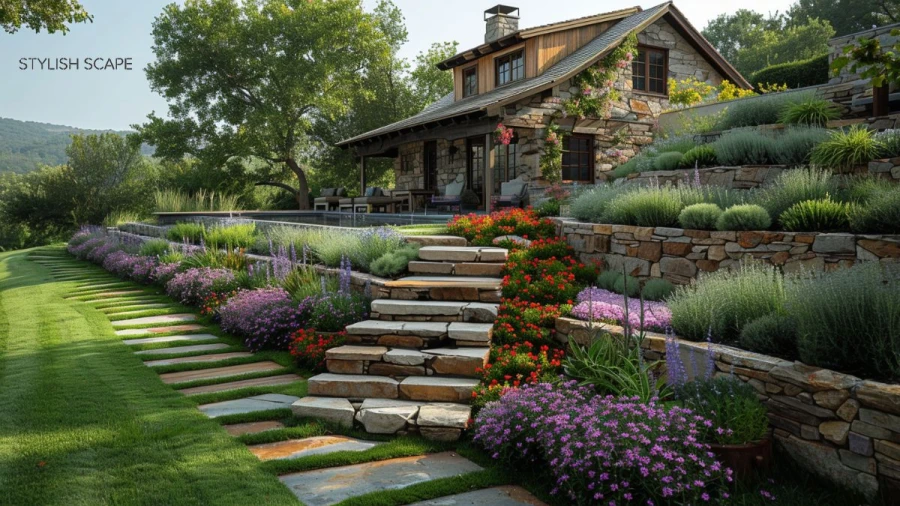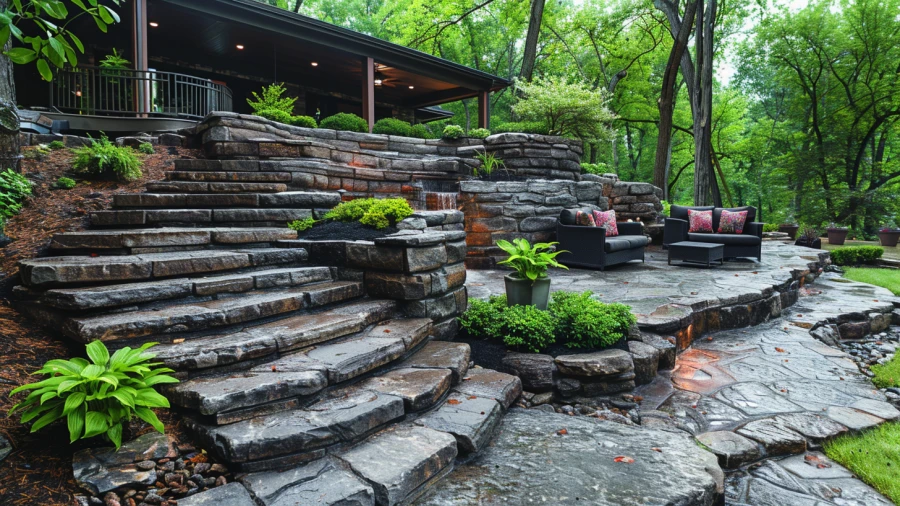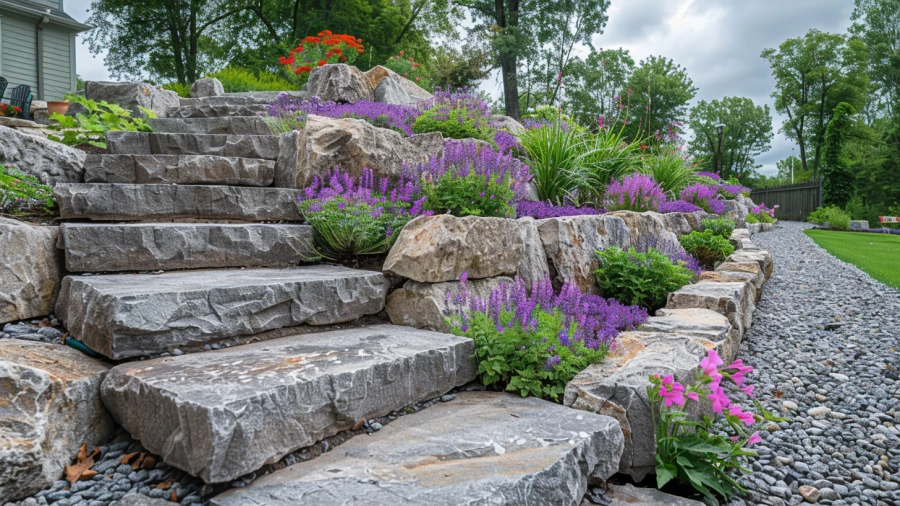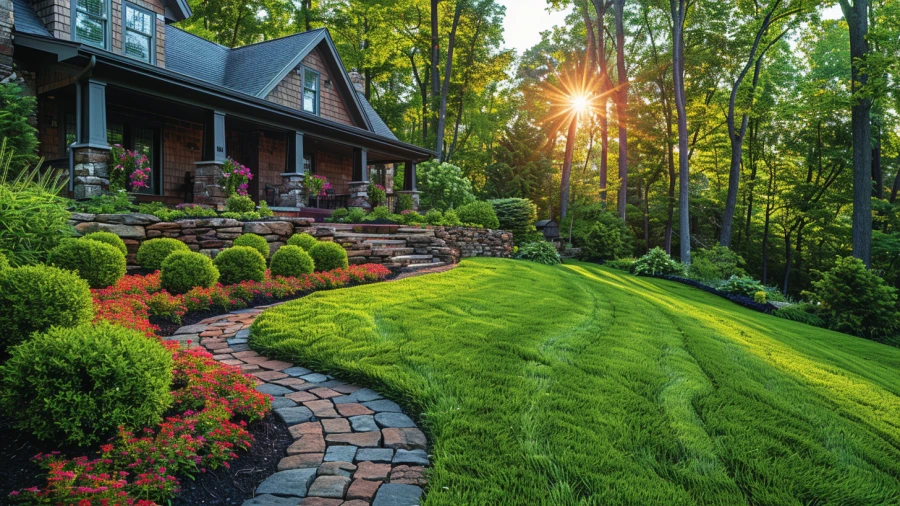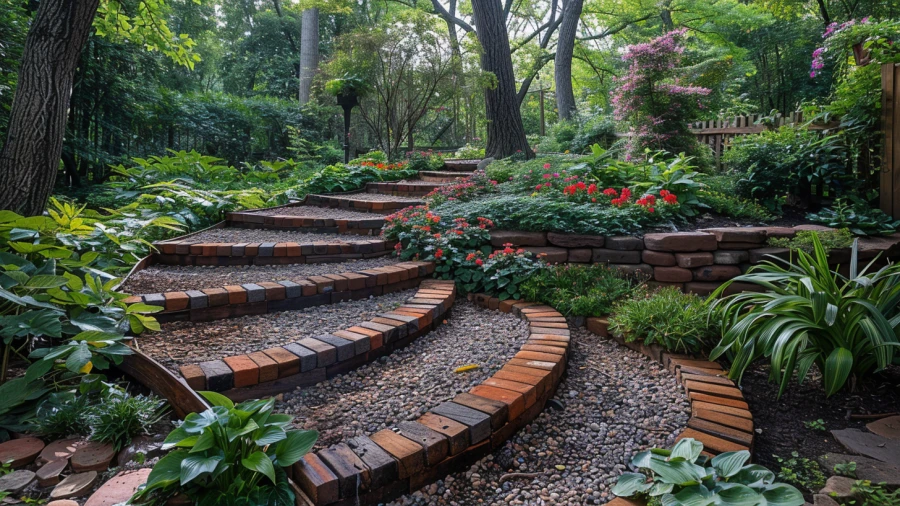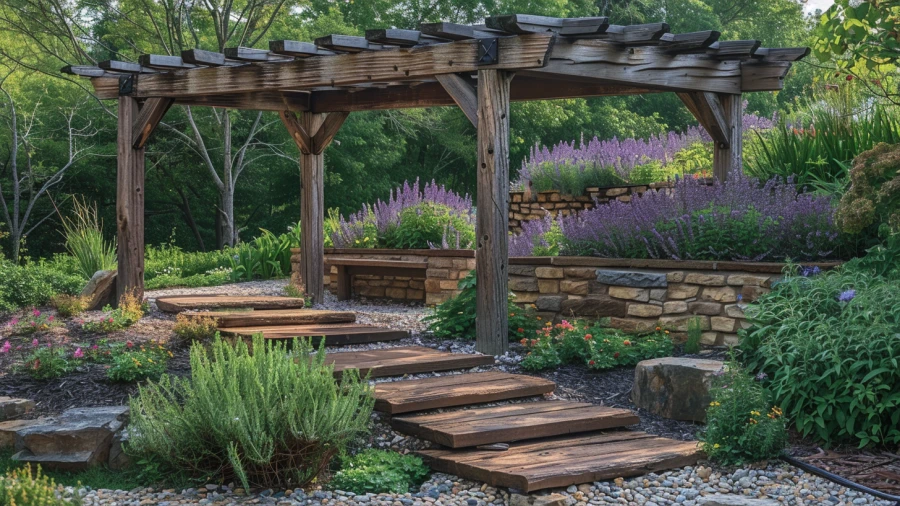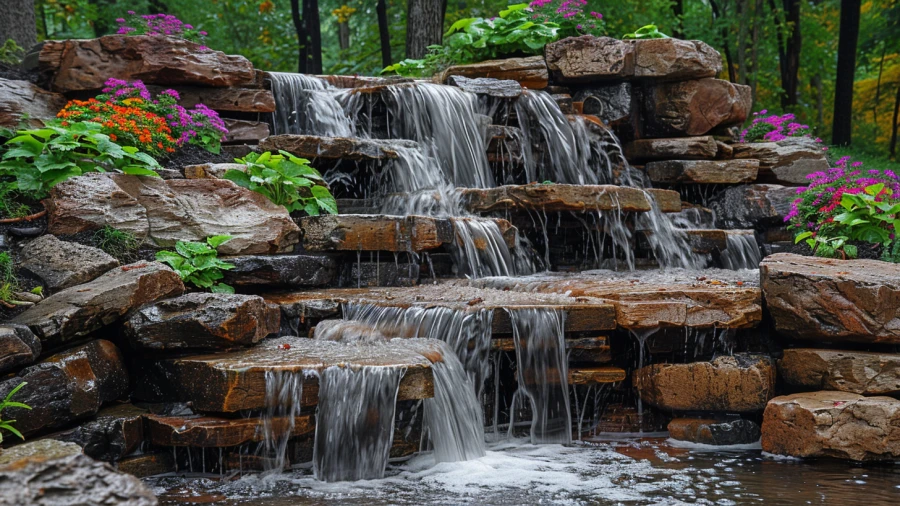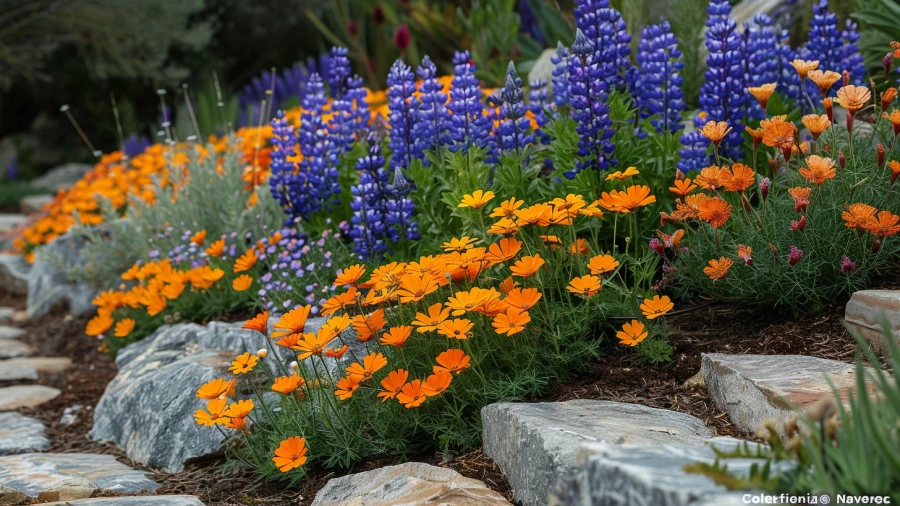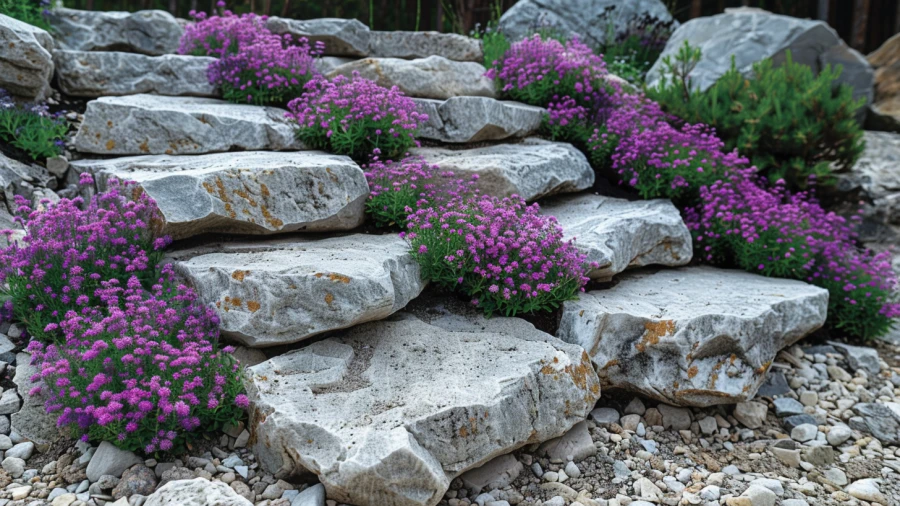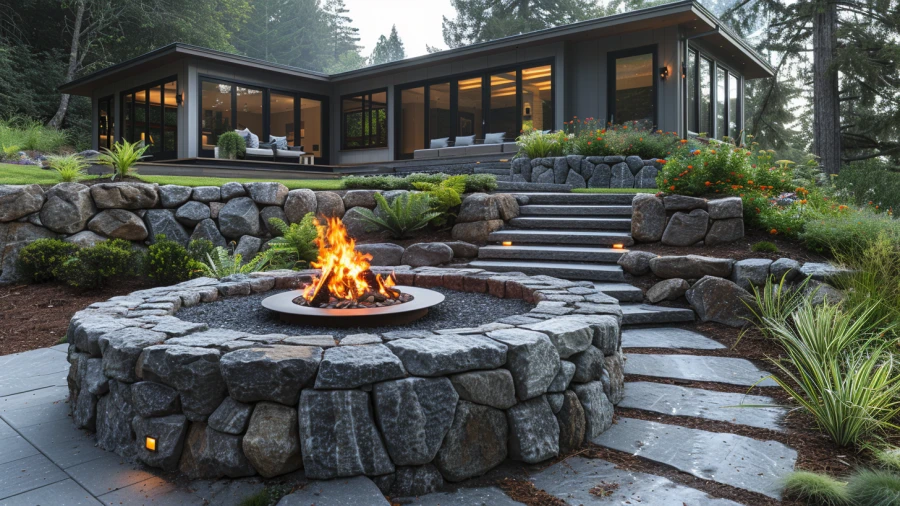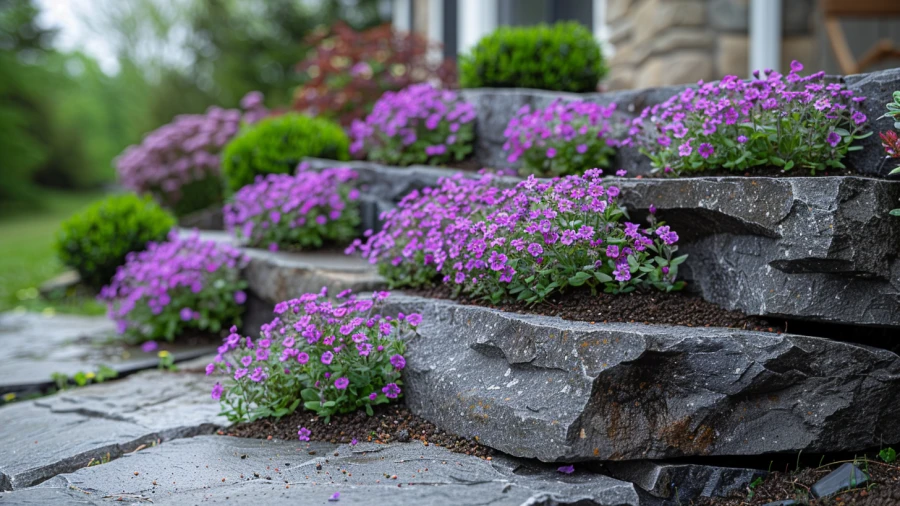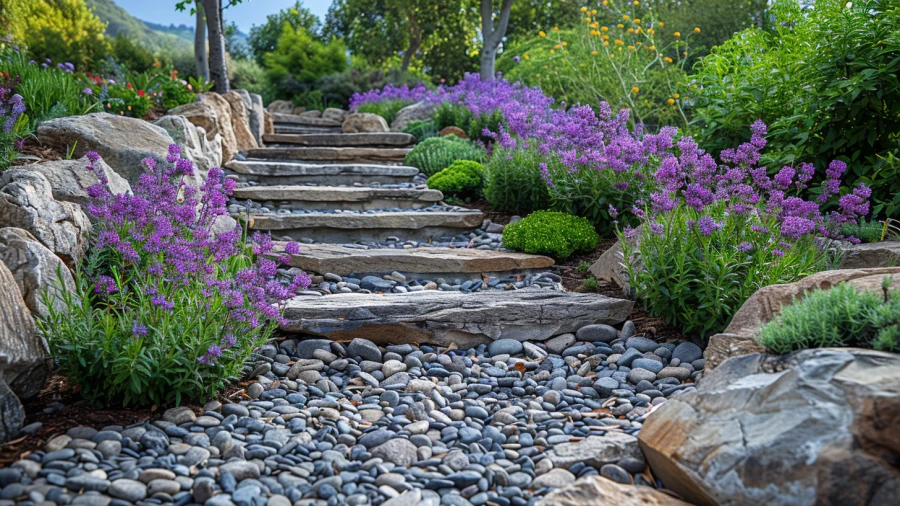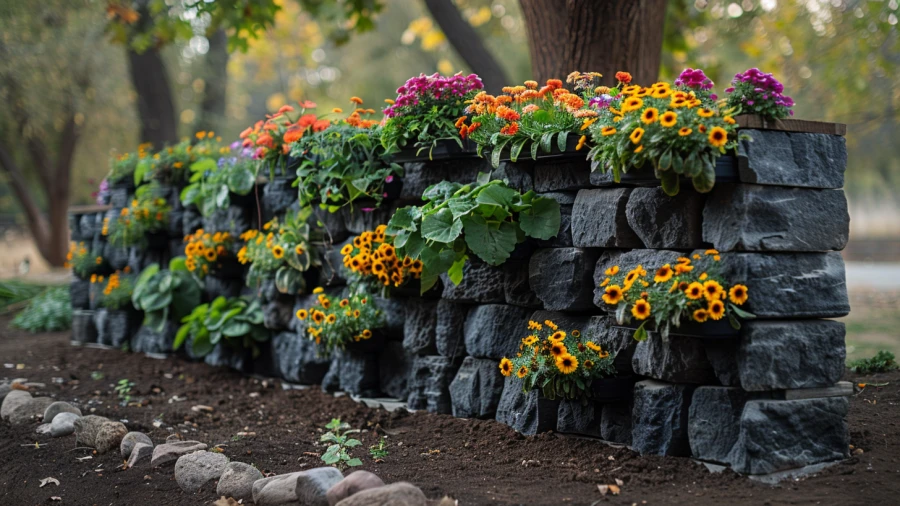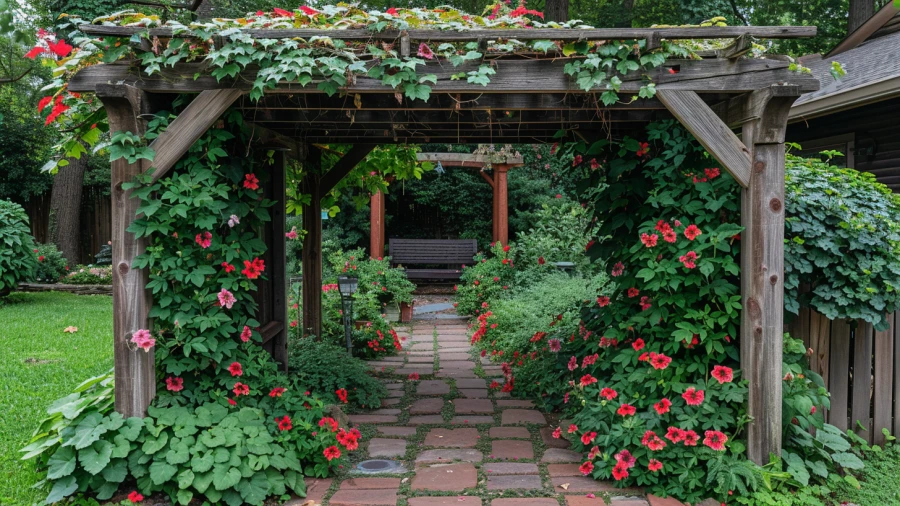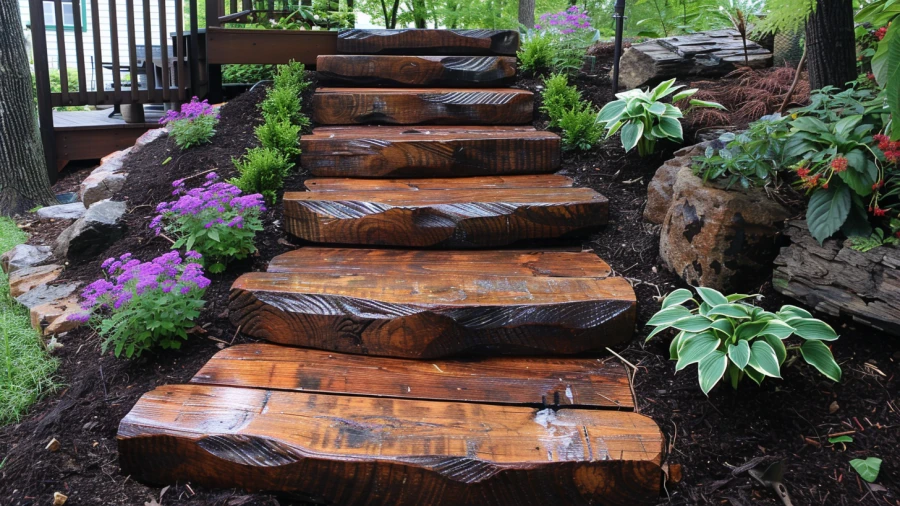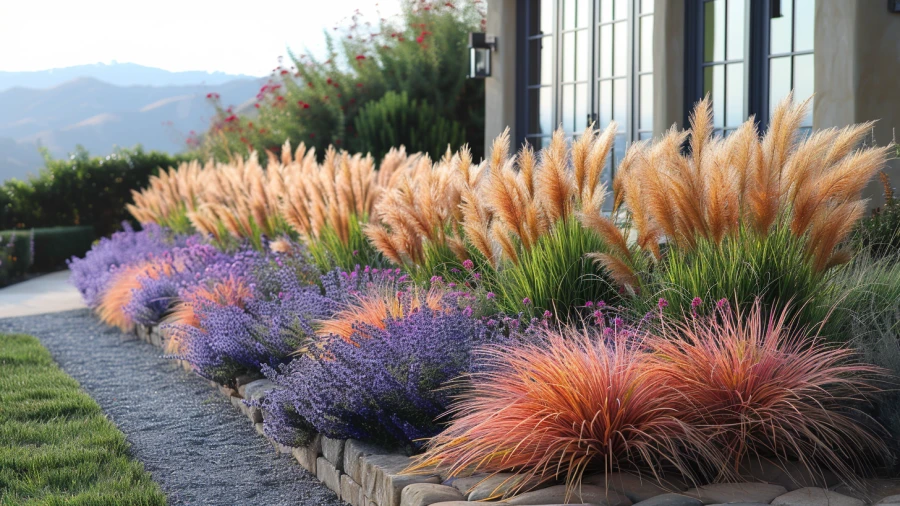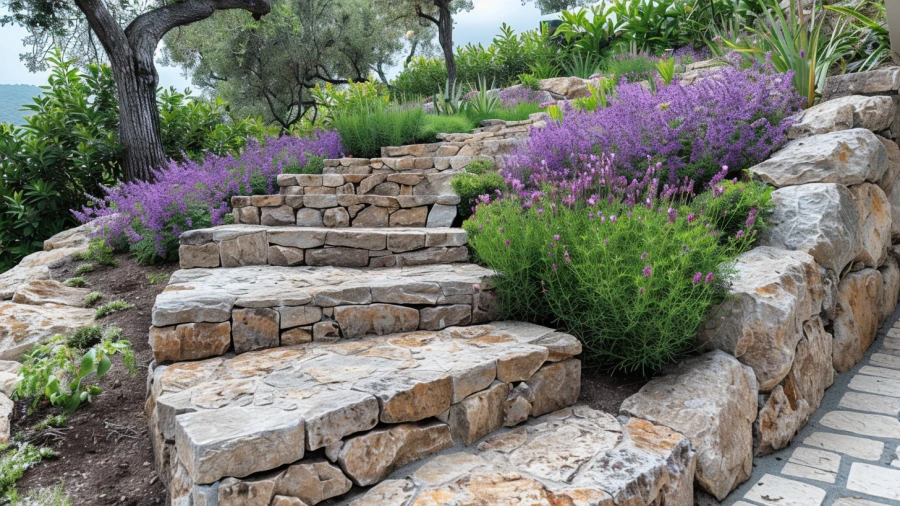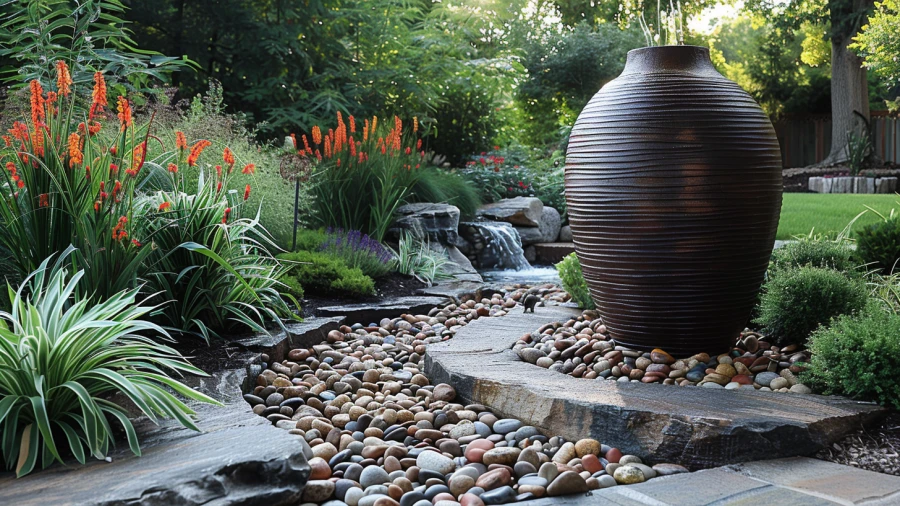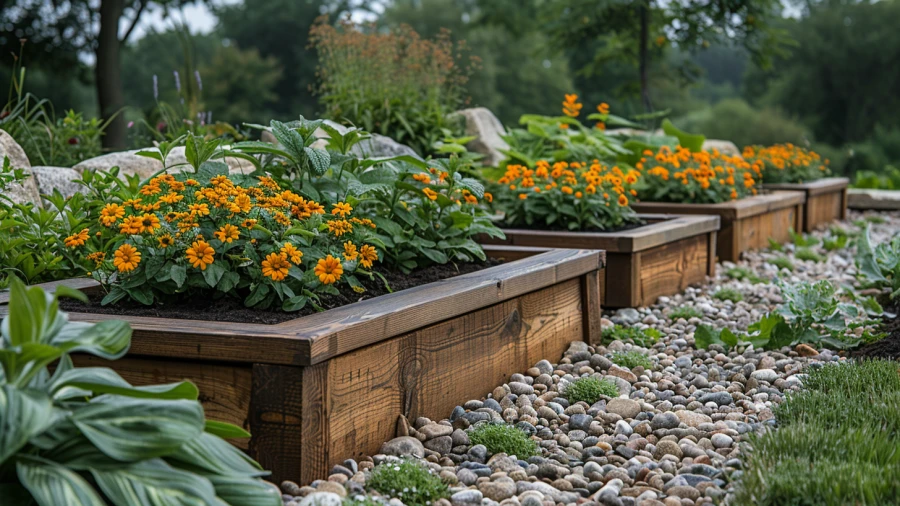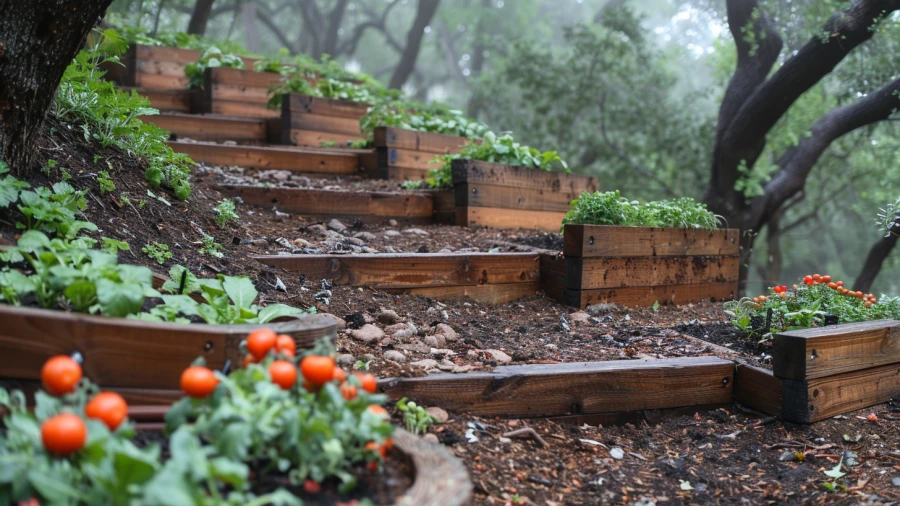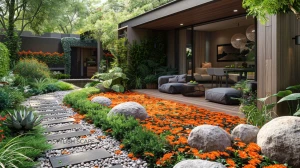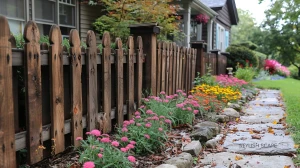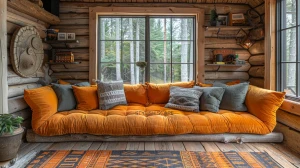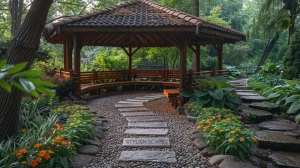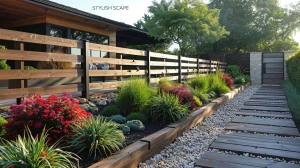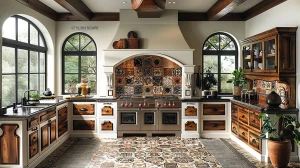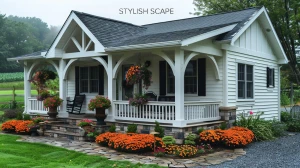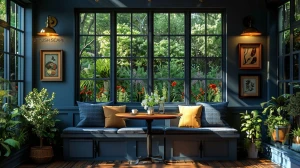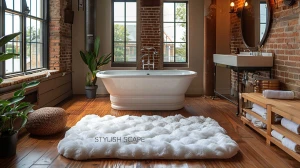
20 Creative Hillside Landscaping Ideas for Stunning Slopes
Explore innovative hillside landscaping ideas to transform your sloped yard into a stunning oasis. From terraced gardens to cascading water features, discover how hillside landscaping can enhance both beauty and functionality. Hillside landscaping redefined.
by Priyanka P
Updated Sep 05, 2024
On This Page
- About Hillside Landscaping
- Hillside Terraced Garden Layouts
- Sunken Outdoor Patios
- Hillside Stone Retaining Walls
- Slope-Friendly Lawns
- Hillside Winding Pathways
- Garden Arbors and Pergolas
- Hillside Cascading Water Features
- Wildflower Meadows
- Hillside Rock Garden Designs
- Outdoor Fire Pits
- Hillside Erosion-Resistant Groundcovers
- Stepping Stone Walkways
- Hillside Vertical Plant Displays
- Climbing Vines
- Hillside Rustic Wooden Steps
- Ornamental Grasses
- Hillside Outdoor Staircases
- Garden Art and Sculptures
- Hillside Elevated Garden Beds
- Edible Plant Gardens
- What are Some Low-Maintenance Landscaping Options For Hillsides?
About Hillside Landscaping
Hillside landscaping involves designing and planting gardens on sloped areas. This type of landscaping can be challenging due to the incline but offers unique opportunities to create beautiful and functional outdoor spaces. To manage a hillside, you can use terracing to create flat areas for planting. Building retaining walls with materials like stone or wood helps prevent soil erosion and adds visual interest.
Choosing plants that can handle slope conditions, such as groundcovers and drought-tolerant species, helps maintain the garden and stabilize the soil. Adding features like winding paths, cascading water, or rock gardens can enhance the beauty of the slope. With careful planning and the right plants, hillside landscaping can transform a challenging space into a stunning and enjoyable part of your yard.
Hillside Terraced Garden Layouts
Terraced gardens are an excellent way to manage sloped areas, turning a challenging incline into a series of flat planting spaces. By creating multiple levels, you can prevent soil erosion and improve water drainage. Use materials like stone, timber, or even concrete to build retaining walls between terraces.
These levels can be planted with various flowers, vegetables, or shrubs, making them both functional and aesthetically pleasing. Terraces also provide easy access for maintenance and harvesting, enhancing the overall usability of the garden.
Sunken Outdoor Patios
Sunken patios offer a cozy and integrated outdoor space, particularly on a slope. By digging into the hillside, you create a level area that blends seamlessly with the surrounding landscape. This design not only provides a sheltered area for dining or lounging but also helps with drainage by directing water away from the patio. Use materials such as brick, stone, or pavers to match your landscape design. Incorporate comfortable seating, lighting, and perhaps a fire pit to enhance the ambiance.
Hillside Stone Retaining Walls
Stone retaining walls are both functional and visually appealing for hillside landscaping. They help to prevent soil erosion and can be used to create terraced levels or define different areas of your garden. Choose durable stones that blend with your natural surroundings, and ensure proper drainage behind the walls to prevent water buildup. These walls can be built in various styles, from rugged, natural stone to more refined, cut stone options, depending on your aesthetic preferences.
Slope-Friendly Lawns
Creating a slope-friendly lawn involves selecting grass varieties that can withstand the challenges of a sloped terrain. Look for grasses with deep roots and drought resistance, such as fescue or bluegrass. Implement erosion control measures like installing sod or using hydroseeding techniques to establish the lawn. Regular maintenance, including proper watering and mowing, will help keep the lawn healthy. Consider incorporating ground covers or low-growing plants to reduce maintenance and prevent soil erosion.
Hillside Winding Pathways
Winding pathways are a charming way to navigate a sloped garden while adding visual interest. Use materials like gravel, stepping stones, or brick to create a meandering path that leads through the garden. The curves of the pathway not only guide visitors through the space but also help manage water runoff and prevent soil erosion. Incorporate planting beds along the path to enhance the aesthetic appeal and provide resting spots with benches or small seating areas.
Garden Arbors and Pergolas
Arbors and pergolas add vertical interest to a hillside garden, creating shaded spots and defining outdoor spaces. Place them strategically along pathways or near seating areas to enhance the garden’s functionality and charm. Choose materials that complement your landscape design, such as wood, metal, or stone. These structures can be adorned with climbing plants like roses or wisteria, which will eventually create a lush, green canopy, adding both beauty and privacy to your outdoor space.
Hillside Cascading Water Features
Cascading water features, such as waterfalls or streams, are perfect for hillside gardens. They add a serene element to your landscape and help with water management by directing runoff. Construct a natural-looking waterfall with stones or boulders, allowing water to flow down the slope and into a pond or basin below. This feature not only enhances the visual appeal but also creates soothing sounds and attracts wildlife, making your garden a tranquil retreat.
Wildflower Meadows
Wildflower meadows bring a touch of natural beauty to hillside gardens, providing a low-maintenance alternative to traditional lawns. Choose native wildflowers that are well-suited to your climate and soil conditions. Scatter seeds across the slope and allow them to grow naturally, creating a colorful and diverse floral display. Wildflower meadows also support local wildlife, including pollinators like bees and butterflies, and require less water and upkeep compared to manicured gardens.
Hillside Rock Garden Designs
Rock gardens are ideal for hillside landscapes, providing a rugged, natural look while preventing erosion. Arrange a variety of rocks and boulders to create visual interest and structure. Plant drought-tolerant, low-maintenance plants between the rocks, such as succulents or alpine flowers, which thrive in poor soil conditions. Rock gardens are also great for showcasing unique stones or creating focal points, making them both functional and decorative.
Outdoor Fire Pits
Outdoor fire pits are a fantastic addition to a hillside garden, offering a warm and inviting space for gatherings. Position the fire pit in a flat area or create a level surface with paving stones or a built-in platform. Choose a design that complements your landscape style, whether it's a traditional stone fire pit or a modern, sleek version. Surround the fire pit with comfortable seating and add lighting to enhance the ambiance, making it a perfect spot for evening relaxation.
Hillside Erosion-Resistant Groundcovers
Groundcovers are essential for managing erosion on sloped areas. Select low-growing, spreading plants that can stabilize soil with their root systems. Options like creeping thyme, clover, or sedum are excellent for covering large areas while preventing soil erosion. These plants also add greenery and texture to your hillside garden, requiring minimal maintenance. Regularly monitor the ground cover for any bare spots and fill in with additional plants as needed to maintain effective erosion control.
Stepping Stone Walkways
Stepping stone walkways offer a charming and practical solution for navigating a hillside garden. Arrange large stones or pavers along a path, ensuring they are set at an even height to prevent tripping. The gaps between the stones can be filled with gravel or groundcover plants to enhance the natural look. Stepping stones create a visually pleasing pathway that blends with the garden’s landscape while providing a stable surface for walking.
Hillside Vertical Plant Displays
Vertical plant displays are an innovative way to utilize space on a hillside. Install trellises, wall planters, or vertical garden structures to grow climbing plants, herbs, or flowers. These displays add greenery and visual interest without taking up valuable ground space. Choose plants that are well-suited to vertical growth, such as beans, tomatoes, or flowering vines. Vertical gardens also help manage erosion by anchoring soil with plant roots.
Climbing Vines
Climbing vines are a versatile addition to hillside gardens, adding vertical greenery and beauty. Train vines like clematis, honeysuckle, or ivy to grow on trellises, arbors, or fences. These plants can cover unsightly structures, create privacy screens, or enhance garden aesthetics. Ensure the support structures are securely anchored and positioned to maximize sunlight for the vines. Climbing vines not only add color and texture but also help with erosion control by stabilizing soil.
Hillside Rustic Wooden Steps
Rustic wooden steps blend naturally with hillside landscapes, providing a functional and aesthetically pleasing way to navigate slopes. Construct steps from durable, weather-resistant wood such as cedar or oak. Ensure proper spacing and secure installation to prevent accidents. Incorporate landscaping around the steps with groundcovers or small plants to enhance the natural look. Wooden steps can be integrated into a larger design, connecting different levels of your garden seamlessly.
Ornamental Grasses
Ornamental grasses add movement and texture to hillside gardens. Choose varieties like fountain grass, blue fescue, or miscanthus that thrive in your climate and soil conditions. Plant these grasses in clusters or as borders to create visually striking contrasts with other plants. Ornamental grasses are also effective for erosion control, as their root systems help stabilize soil. They require minimal maintenance and can provide year-round interest with their changing colors and forms.
Hillside Outdoor Staircases
Outdoor staircases are essential for managing access to different levels on a hillside. Build stairs using durable materials like stone, concrete, or wood, ensuring they are well-constructed and safe to use. Incorporate handrails if needed for added safety. Design the staircase to blend with the natural landscape, possibly integrating plantings along the sides to soften the look. Outdoor staircases improve functionality and accessibility while enhancing the overall design of your hillside garden.
Garden Art and Sculptures
Garden art and sculptures add a personal touch and visual interest to a hillside landscape. Choose pieces that complement your garden’s style, such as abstract sculptures, classical statues, or whimsical garden ornaments. Position them strategically along pathways or focal points to draw attention and enhance the overall design. Garden art can also serve as a conversation starter and create unique visual statements that reflect your personal taste and creativity.
Hillside Elevated Garden Beds
Elevated garden beds are ideal for sloped areas, providing level planting surfaces and preventing erosion. Construct beds using materials like timber, stone, or metal to match your landscape design. Raised beds make gardening easier by reducing the need to bend or kneel, and they improve drainage and soil quality. Plant a variety of flowers, vegetables, or herbs to make the most of the space and create a visually appealing, functional garden area.
Edible Plant Gardens
Edible plant gardens are a great way to use your hillside space productively. These gardens allow you to grow fruits, vegetables, and herbs that you can eat. Start by choosing plants that fit your climate and soil. For slopes, use raised beds or terraced levels to make planting easier and to prevent soil from washing away.
Some easy-to-grow options are tomatoes, peppers, lettuce, and herbs like basil or mint. Raised beds or containers can help if the ground is too steep or rocky. Make sure to water your plants regularly and add compost to keep the soil healthy. Edible gardens not only provide fresh, home-grown food but also add beauty to your landscape. Plus, they can save you money and reduce trips to the grocery store.
What are Some Low-Maintenance Landscaping Options For Hillsides?
Here are some low-maintenance landscaping options for hillsides:
- Drought-Tolerant Plants: Choose plants like lavender, sedum, and ornamental grasses that require minimal watering and thrive in dry conditions.
- Groundcovers: Use spreading groundcovers such as creeping thyme, clover, or creeping juniper to stabilize soil and reduce the need for frequent maintenance.
- Rock Gardens: Incorporate rocks and boulders with low-maintenance, drought-resistant plants like succulents and alpine plants for a natural look that requires little care.
- Mulch: Apply mulch around plants to help retain soil moisture, suppress weeds, and reduce the need for frequent weeding and watering.
- Native Plants: Select native species that are well-adapted to local soil and climate conditions, reducing the need for additional resources and care.
- Gravel Paths: Use gravel or crushed stone for pathways, which are easy to maintain and help with drainage on sloped areas.
Hillside Landscaping Ideas - FAQs
1. What are the best plants for hillside landscaping?
Opt for groundcovers, ornamental grasses, and drought-resistant plants. Examples include creeping thyme, sedum, and ornamental grasses like blue fescue, which help stabilize soil and reduce erosion.
2. How can I prevent soil erosion on a slope?
Use techniques like terracing, retaining walls, and erosion-control plants. Incorporating mulch and groundcovers also helps to hold the soil in place and manage water runoff.
3. What materials are best for building retaining walls on a hillside?
Durable materials such as natural stone, concrete blocks, or timber are ideal. Choose materials that complement your landscape and ensure proper drainage to prevent water buildup behind the wall.
4. How do I design a functional path on a hillside?
Create winding paths using materials like gravel, stepping stones, or pavers. Ensure the path has a gentle incline and proper drainage to prevent erosion and make navigation easier.
5. Can I install a water feature on a slope?
Yes, cascading waterfalls or streams work well on slopes. Ensure proper construction to manage water flow and prevent erosion. Position the feature strategically to enhance both aesthetics and functionality.
